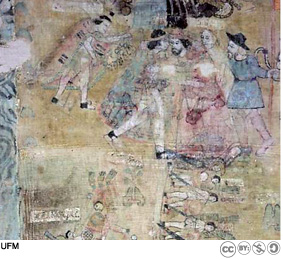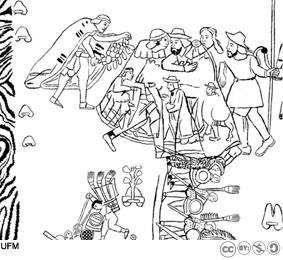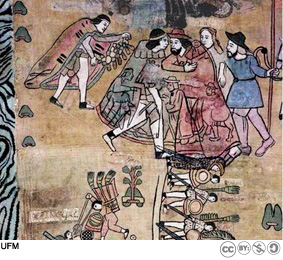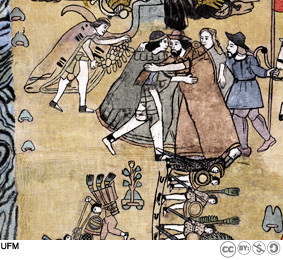8. What was the process?
The designers created four digital layers, each for a different procedure:
- Clean and eliminate stains and blurs, and digitally reconstruct tears, thread by thread.
- Reproduce the textures in the Lienzo. The original canvas was constructed from fifteen rectangular panels of cotton cloth sewn together. The weave of each of these panels had to be replicated, along with the seams that joined them.
- Restore the colors, which had lost their intensity or run. Experts in natural dyes and textiles (from the Ixchel Museum of Indigenous Dress) defined the color palette that would have been available to paint the Lienzo. This palette was applied to the pictograms, and the color values adjusted, under their guidance.
- Redraw the black outlines of each pictographic element in the Lienzo. In many scenes, the original lines of the pictures had become fuzzy or faint, often making the pictures look like stains. Experts in pre-Columbian iconography and epigraphy guided this work.
After all of the 15 sections had been restored, the last step was to match them perfectly in color, line, and texture, and put them back together.





